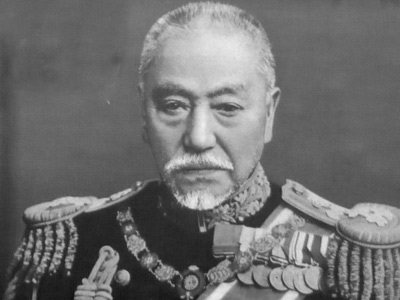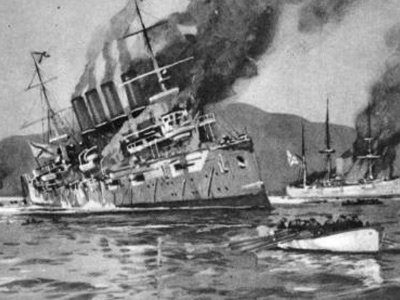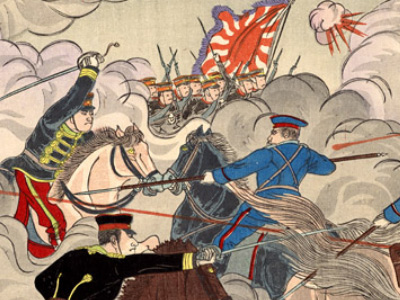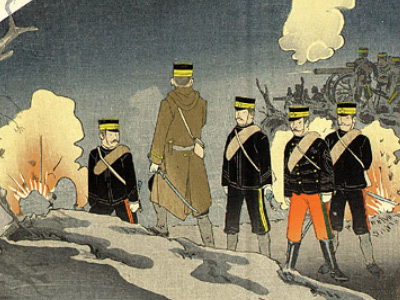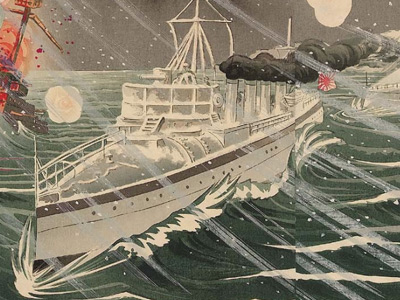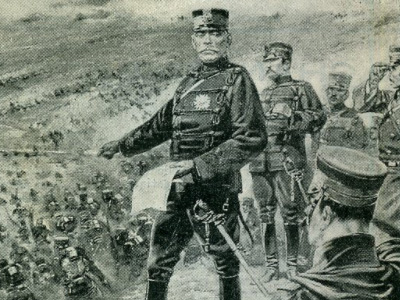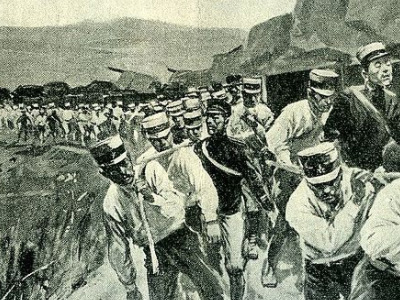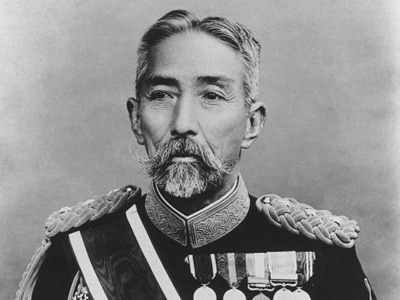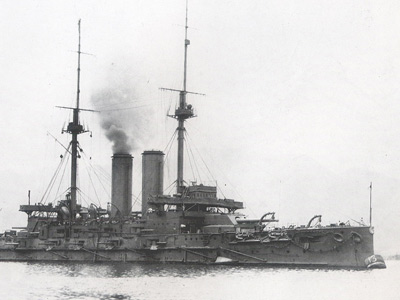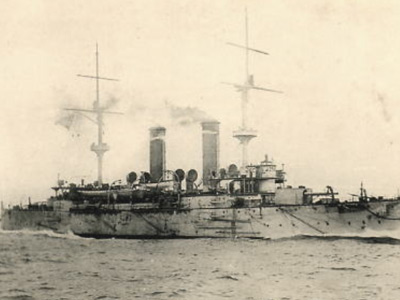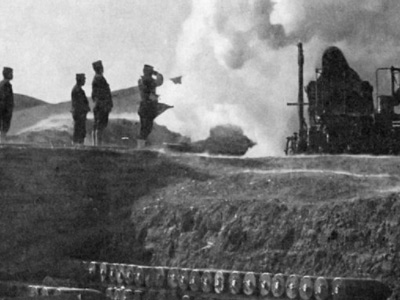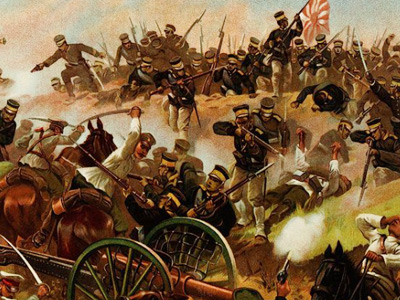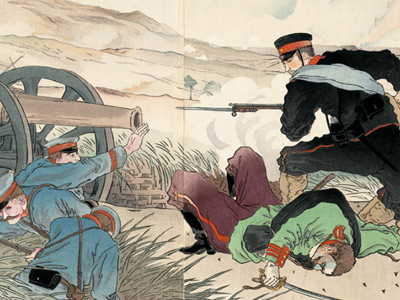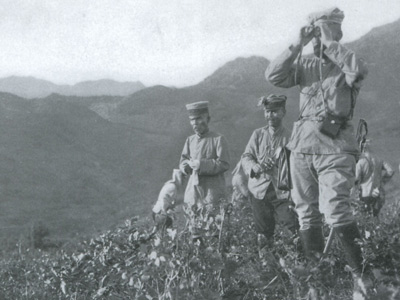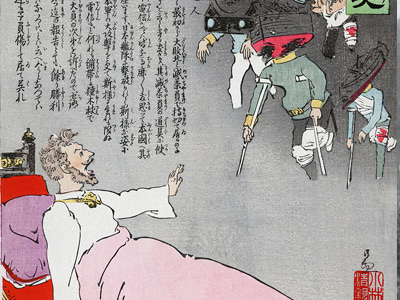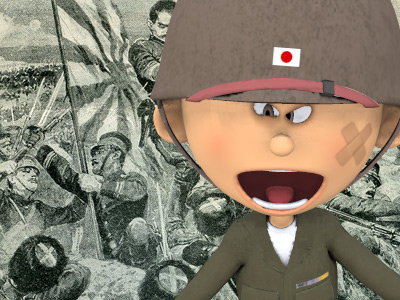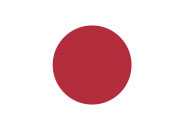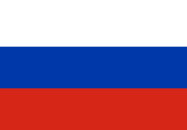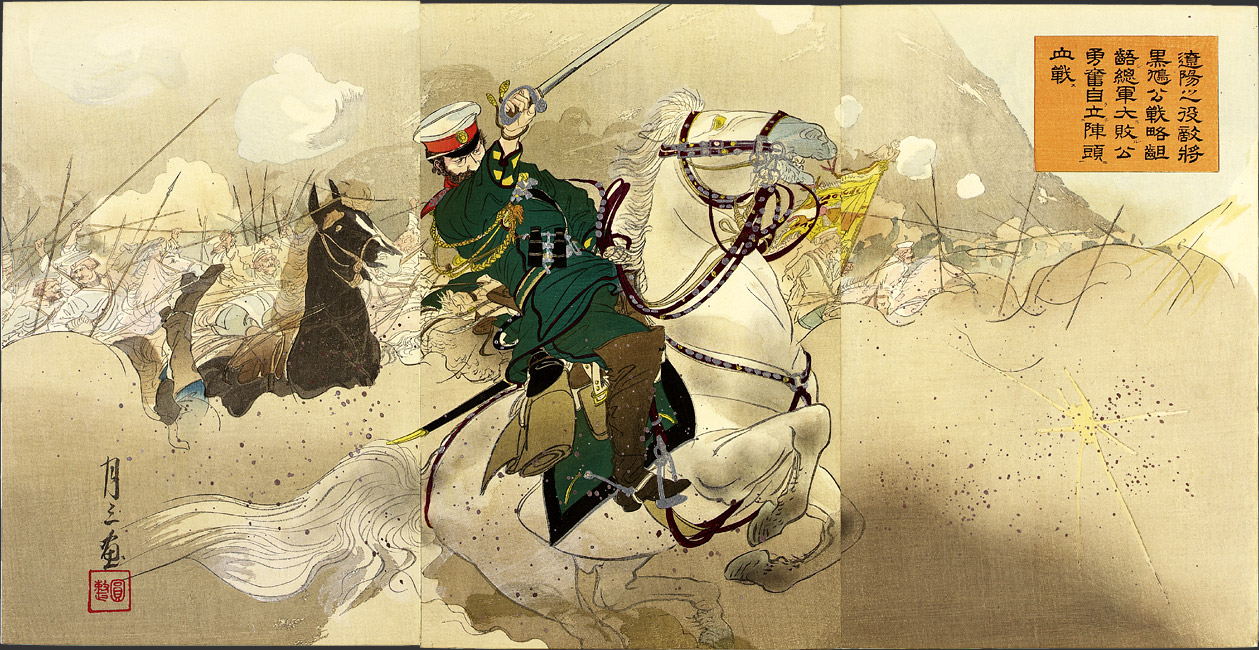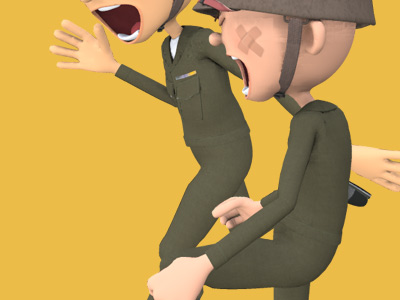Russo-Japanese War (1904–1905)
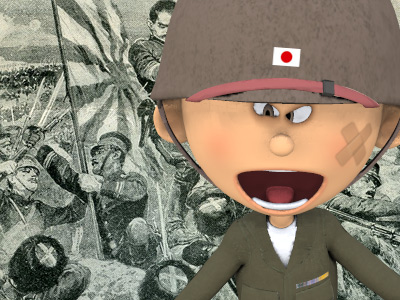
Battle off Ulsan
The naval Battle off Ulsan (Japanese: 蔚山沖海戦 Urusan'oki kaisen), also known as the Battle of the Japanese Sea or Battle of the Korean Strait, took place on 14 August 1904 between cruiser squadrons of the Imperial Russian Navy and the Imperial Japanese Navy during the Russo-Japanese War, four days after the Battle of the Yellow Sea.
Background
At the start of the Russo-Japanese War, the bulk of the Russian Russian Empire was an empire and the final period of the Russian monarchy from 1721 to 1917, ruling across large parts of Eurasia. The rise of the Russian Empire coincided with the decline of neighbouring rival powers: the Swedish Empire, the Polish–Lithuanian Commonwealth, Qajar Iran, the Ottoman Empire, and Qing China. Russia remains the third-largest empire in history, surpassed only by the British Empire and the Mongol Empire. Pacific Fleet was blockaded within the confines of Port Arthur by the Imperial Japanese Navy. However, the Russian subsidiary naval base at Vladivostok, although shelled by a Japanese squadron under the command of Vice Admiral Dewa Shigetō in March 1904, remained largely undamaged. Located at Vladivostok was a garrison force consisting of the light cruiser Bogatyr and auxiliary cruiser Lena and a stronger Vladivostok Independent Cruiser Squadron consisting of the armored cruisers Rossia, Rurik, and Gromoboi. This force was under the command of Rear Admiral Karl Jessen from 15 March – 12 June 1904, Vice Admiral Petr Bezobrazov from 12 June – 16 October 1904 and from Jessen again from 15 October 1904 until the end of the war.
Russian Empire was an empire and the final period of the Russian monarchy from 1721 to 1917, ruling across large parts of Eurasia. The rise of the Russian Empire coincided with the decline of neighbouring rival powers: the Swedish Empire, the Polish–Lithuanian Commonwealth, Qajar Iran, the Ottoman Empire, and Qing China. Russia remains the third-largest empire in history, surpassed only by the British Empire and the Mongol Empire. Pacific Fleet was blockaded within the confines of Port Arthur by the Imperial Japanese Navy. However, the Russian subsidiary naval base at Vladivostok, although shelled by a Japanese squadron under the command of Vice Admiral Dewa Shigetō in March 1904, remained largely undamaged. Located at Vladivostok was a garrison force consisting of the light cruiser Bogatyr and auxiliary cruiser Lena and a stronger Vladivostok Independent Cruiser Squadron consisting of the armored cruisers Rossia, Rurik, and Gromoboi. This force was under the command of Rear Admiral Karl Jessen from 15 March – 12 June 1904, Vice Admiral Petr Bezobrazov from 12 June – 16 October 1904 and from Jessen again from 15 October 1904 until the end of the war.
Commerce Raiding Operations
The Vladivostok Independent Cruiser Squadron made a total of six sorties from Vladivostok for commerce raiding in 1904, sinking a total of 15 transports. The first raid was from 9 to 14 February along the coast of Japan, in which a single transport was sunk. The second was from 24 February to 1 March along the coast of Korea without any results. However, during the third raid from 23 to 27 April, the Russian squadron ambushed Japanese The Empire of Japan, also known as the Japanese Empire or Imperial Japan, was a historical nation-state and great power that existed from the Meiji Restoration in 1868 until the enactment of the post-World War II 1947 constitution and subsequent formation of modern Japan. Economic and political turmoil in the 1920s led to the rise of militarism, nationalism and totalitarianism eventually culminating in Japan's membership in the Axis alliance. troop transports approaching Gensan in Korea, causing considerable damage. The fourth raid from 12 to 19 June sank several transports in the Tsushima Strait in what was called the "Hitachi Maru Incident", and resulted in the capture of a British transport, Allantown. This was followed by the fifth raid from 28 June – 3 July, again in the Tsushima Strait, in which the British transport Cheltenham was captured. Finally on 17 July to 1 August, the Russian squadron raided the Pacific coast of Japan, sinking one British and one German freighter. As a result of these operations, the Japanese were forced to assign the IJN 2nd Fleet under the command of Vice Admiral Kamimura Hikonojō with considerable resources in an attempt to locate and destroy the Russian squadron. Kamimura's failure to do so on several occasions created considerable adverse public comment in Japan.
The Empire of Japan, also known as the Japanese Empire or Imperial Japan, was a historical nation-state and great power that existed from the Meiji Restoration in 1868 until the enactment of the post-World War II 1947 constitution and subsequent formation of modern Japan. Economic and political turmoil in the 1920s led to the rise of militarism, nationalism and totalitarianism eventually culminating in Japan's membership in the Axis alliance. troop transports approaching Gensan in Korea, causing considerable damage. The fourth raid from 12 to 19 June sank several transports in the Tsushima Strait in what was called the "Hitachi Maru Incident", and resulted in the capture of a British transport, Allantown. This was followed by the fifth raid from 28 June – 3 July, again in the Tsushima Strait, in which the British transport Cheltenham was captured. Finally on 17 July to 1 August, the Russian squadron raided the Pacific coast of Japan, sinking one British and one German freighter. As a result of these operations, the Japanese were forced to assign the IJN 2nd Fleet under the command of Vice Admiral Kamimura Hikonojō with considerable resources in an attempt to locate and destroy the Russian squadron. Kamimura's failure to do so on several occasions created considerable adverse public comment in Japan.
Sortie
A telegram from the First Pacific Squadron at Port Arthur reached Vladivostok on the afternoon of 11 August 1904, stating that Admiral Wilgelm Vitgeft had decided to attempt to break through the Japanese blockade, and therefore Vice Admiral Jessen was ordered to sortie the Vladivostok Cruiser Squadron to assist. However, as late as 5 August 1904, a telegram had been received from Vitgeft stating his intention to perish with Port Arthur, so the Vladivostok cruisers took time to get ready for action. Owing to the delay in sailing, there was little hope of being able to assist the First Pacific Squadron at the critical passage of the Tsushima Straits; however on the assumption that Vitgeft would be successful, the two squadrons planned to rendezvous in the Sea of Japan.
The warships of the Vladivostok Cruiser Squadron formed in a line abreast at intervals of 4 nautical miles (7.4 km) and headed southward at 14 knots (26 km/h), in hourly expectation of sighting the Port Arthur Squadron. However, the Port Arthur Squadron had not been sighted by the following morning. As the Vladivostok Cruiser Squadron approached Busan, Jessen advised his captains that he had no intention of attempting to pass Tsushima Straits, and ordered the squadron back to Vladivostok.
The Japanese 2nd Fleet under Admiral Kamimura was made up of four armored cruisers Izumo, Azuma, Tokiwa, Iwate, and two protected cruisers Naniwa and Takachiho. The Japanese squadron had passed very close to the Russian squadron in the dark of the previous night on opposite courses but neither was aware of the other. From 01:30 on 14 August 1904, Kamimura had been heading back from his night patrol area on a course that took him directly to the Russian squadron. When Jessen started his turn back to Vladivostok, he sighted the four Japanese armored cruisers.
The situation was ideal for the Japanese side. It was dawn on a fine summer day, and the enemy was as far from Vladivostok as it was possible to be in the Sea of Japan, with the Japanese squadron between themselves and their distant base.
The Battle
At 05:20 on 14 August 1904 the fleets had closed to 7,800 metres (25,600 ft), and the Japanese opened fire first. For unknown reasons, Kamimura ordered fire concentrated on Rurik, the last and weakest in the Russian column. Subjected to twice the bombardment administered to her stronger comrades, Rurik lost most of her officers in a short time, and although extremely damaged, remained afloat, the diminishing number of survivors continuing to fire the few remaining guns until the very last, in a gallant display of classic heroism that won the admiration of the Japanese.

Tokiwa
On the easterly run the Japanese ships took some hits, but nothing comparable to what they inflicted. It was assumed that when the Russians sheered away, Kamimura would have pressed his advantage closer. Inexplicably, this did not happen. Kamimura oddly held his course during the Russian turn, and when he ordered his forces to turn a few minutes later, it was to a new tack that actually lengthened rather than narrowed the range.
The remaining Russian cruisers tried to cover Rurik, but with increasing damage, Jessen decided at 08:30 to scuttle Rurik, and save his other ships by heading back towards Vladivostok. The Japanese cruisers pursued for some time, and firing continued, with more damage to the Russian cruisers and slight damage to Iwate and Azuma. The Russians were in a far worse condition than the Japanese, but Kamimura then made another controversial decision: after pursuit of only three hours, while still on the high seas, and with long daylight steaming hours between the Japanese cruisers and Vladivostok, at 11:15 he broke off the chase, and turned back towards Busan.
Despite Kamimura's failure to destroy the two remaining Russian cruisers, he was hailed as a hero in Japan. Although two of the three Russian cruisers escaped, their damage was greater than what the limited repair facilities at Vladivostok could handle, and the Vladivostok Cruiser Squadron never threatened Japanese shipping again.
HISTORY
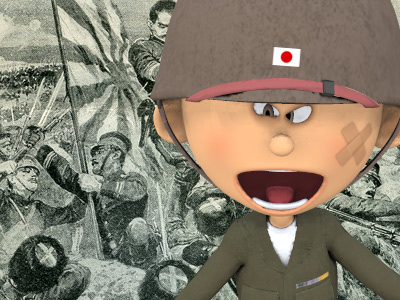
RESOURCES
This article uses material from the Wikipedia articles "Russo-Japanese War" and "Battle off Ulsan", which is released under the Creative Commons Attribution-Share-Alike License 3.0.
© Stories Preschool. All Rights Reserved.
